
Ever wonder about our process? Or what anecdotes didn’t make the story? Join our newsletter for a peak behind the curtain.
“I’ve been all over heck for the last few weeks. Settled for now. 🤣👍. Keep in touch and we can make a plan. Glen.”
It was early December, and I knew it might be tough to catch up with Glen Plake — he could be anywhere in the world doing just about anything at any given time. All over heck turned out to be Baja, California. More on that in a bit.
When we do FaceTime, he’s in Silver Springs, Nevada, where he and Kimberly, his wife of 32 years, have a home on a lake, plus Uncle Willy, the family Jeep of 78 years; Big Red, the RV with 245,000 miles; the barn with 9,000 square feet of vehicles, tools and “all sorts of crap;” and Death Row, a quarry of countless artifacts from his uncontainable life.
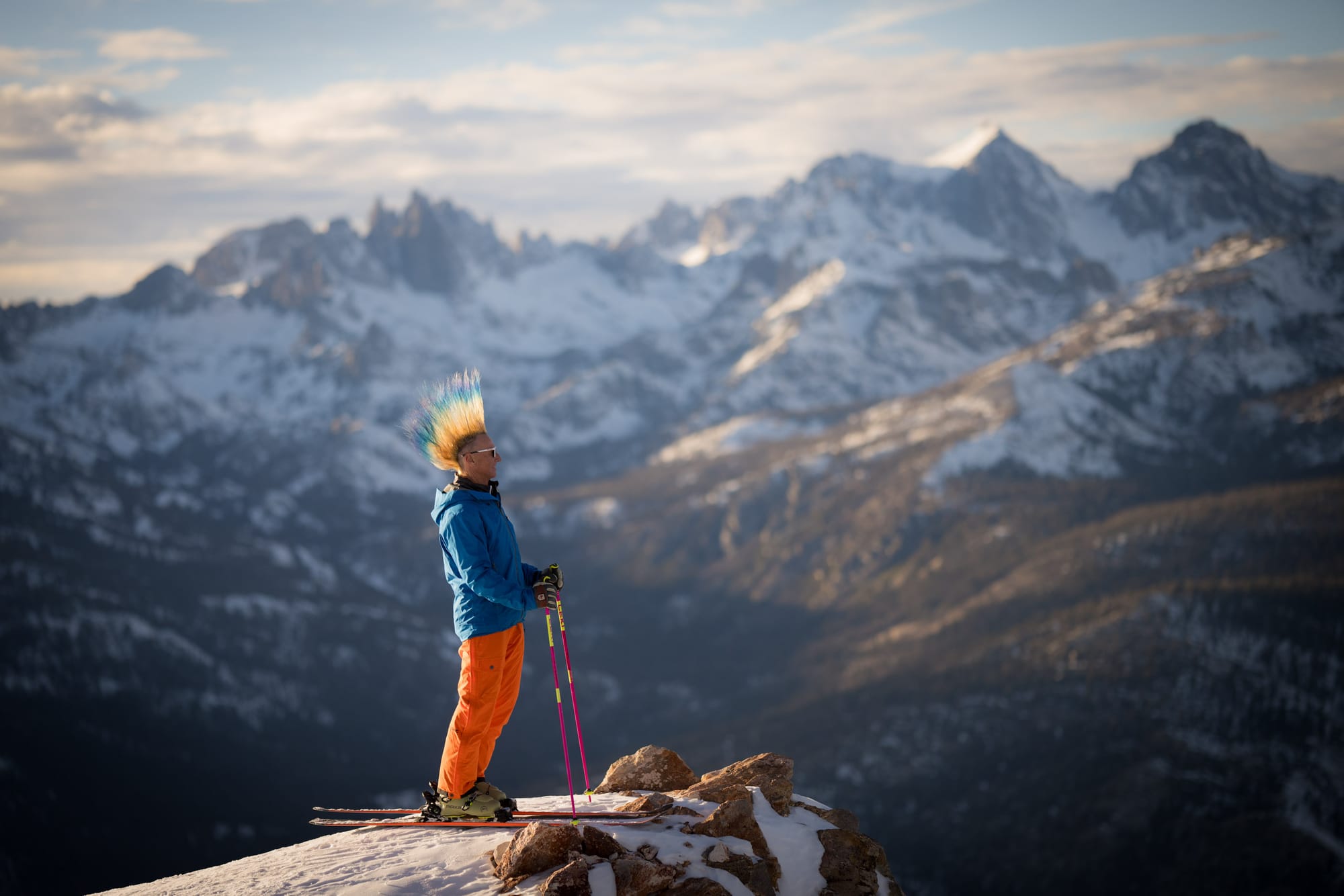
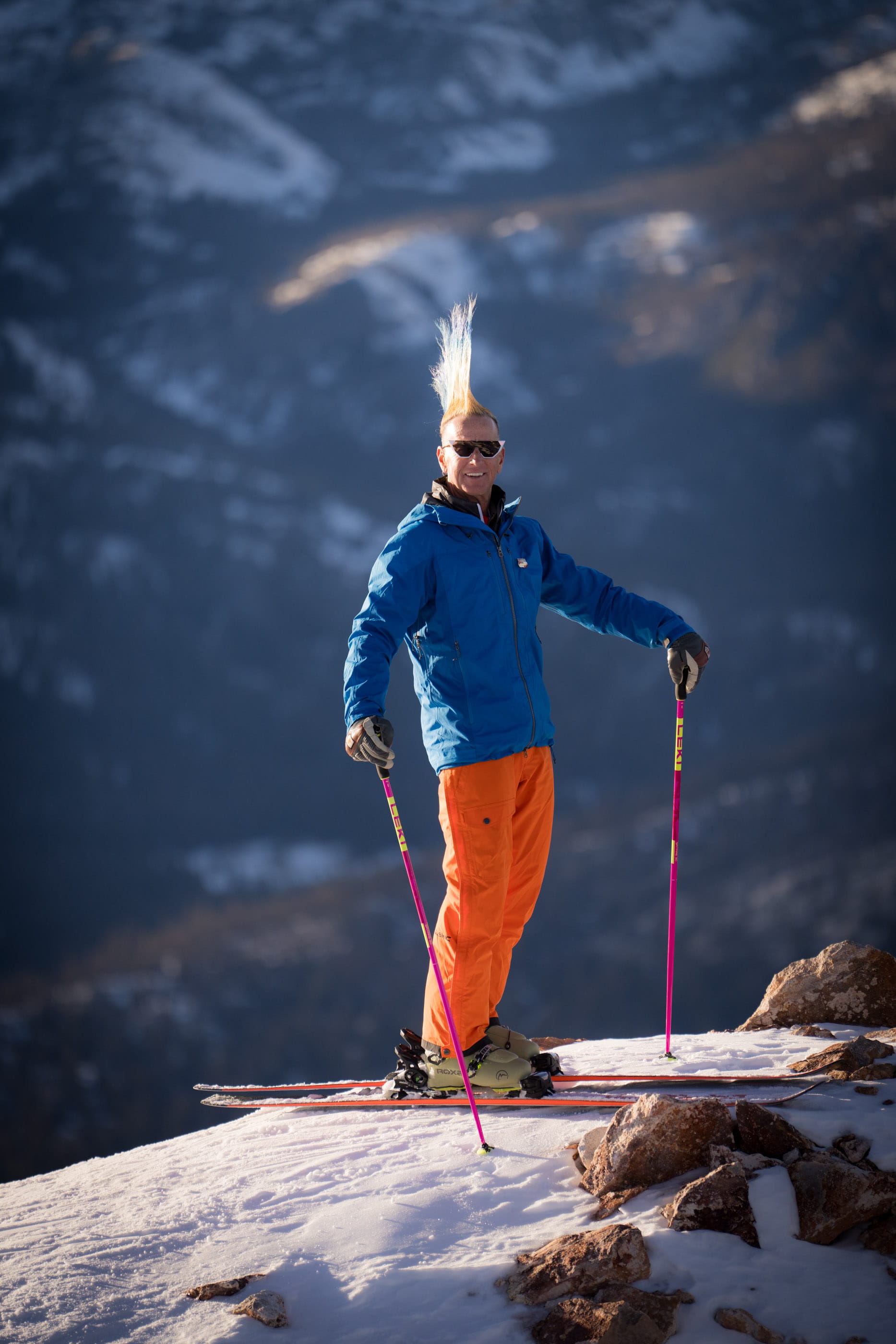
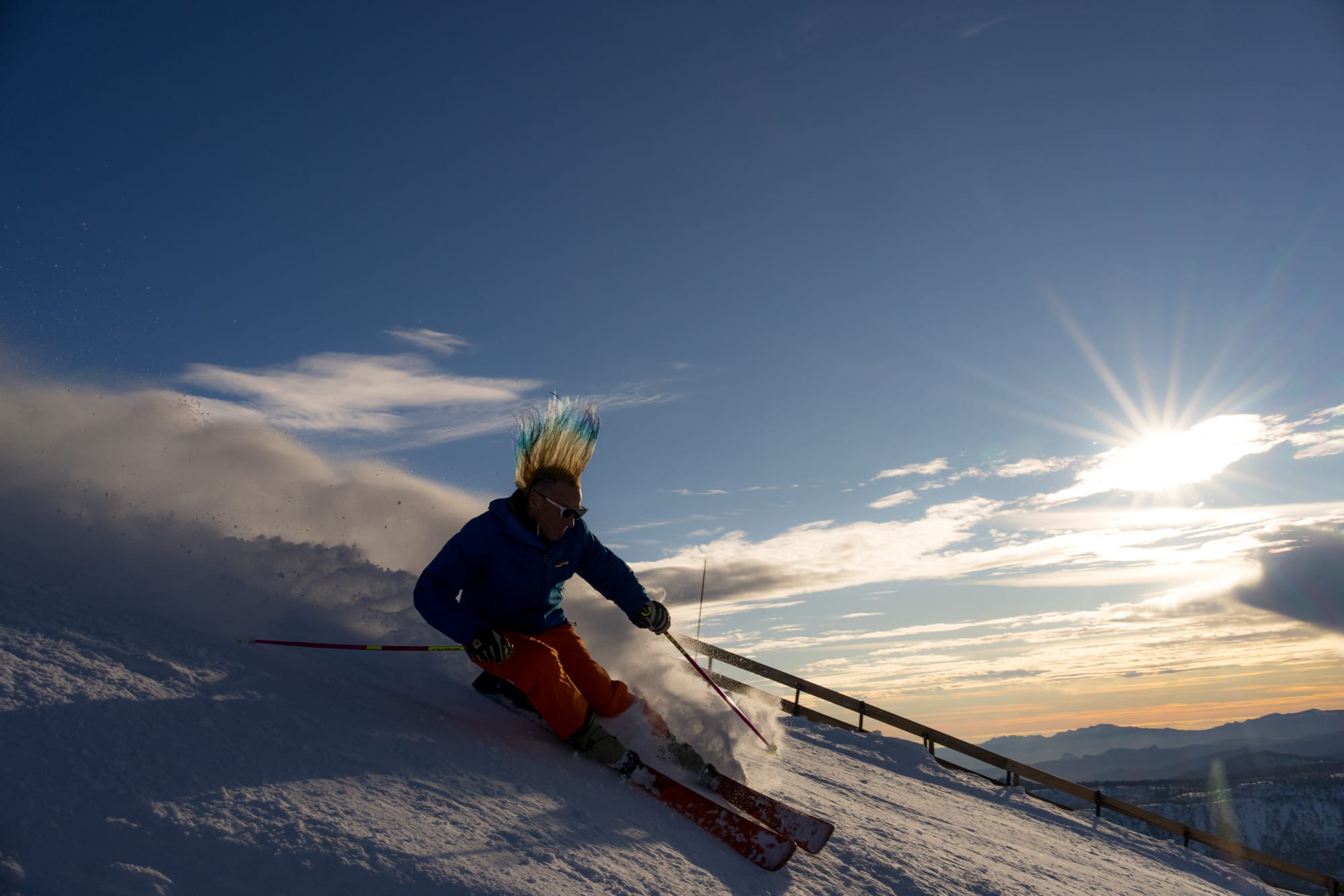
Glen Plake has spent his life taking what the mountains give him, then giving it all back. [Christian Pondella photos]
He laughs when people tell him he should write a book. He laughs all the time, really. But a book? About which part, he wonders. There’s the off-road rally racing. The national championship waterskiing. The endurance road biking. The Himalayan expeditions. And of course, the mohawked extreme skiing he’s probably best known for.
“I gave up a long time ago trying to label myself and/or even list my interests,” he says. “I’m a sportsman.”
A 59-year-old punk rock sportsman who has lived through incarcerations and sobriety, survived unfathomable tragedy, and can fix anything, and charm anyone. And that still doesn’t come close to capturing it all. Every day is as alive and full-color as that 12-inch ’hawk.
About Baja. He’d been down there, as he is most Novembers, pre-running, mapping and entering GPS settings for a team competing in the Baja 1000, a grueling off-road race that in 2023 stretched 1,310.94 miles — almost the entire length of the Baja peninsula — from La Paz north to Ensenada. Plake’s not a formal member of any one team, but he always expects a call around the 1000.
“I got a reputation for knowing what I was doing and being good at it, and I also got a reputation for delivering cars without wrecking them or people’s equipment.”
This time, the call came from Pat Sims, a New Mexico-based racer who needed a navigator for the final 360 or so miles of the race. What does a navigator do besides navigate the course and bounce around in the passenger seat like a desert-dusted ragdoll?
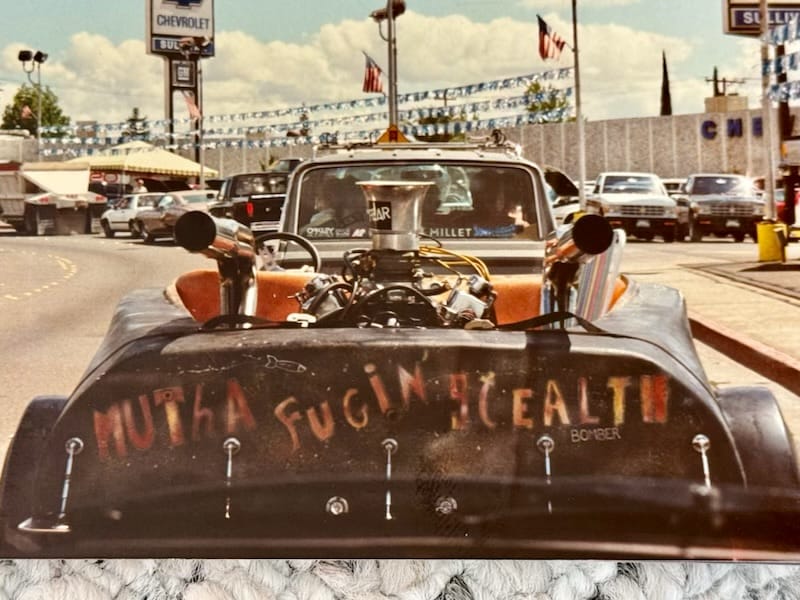

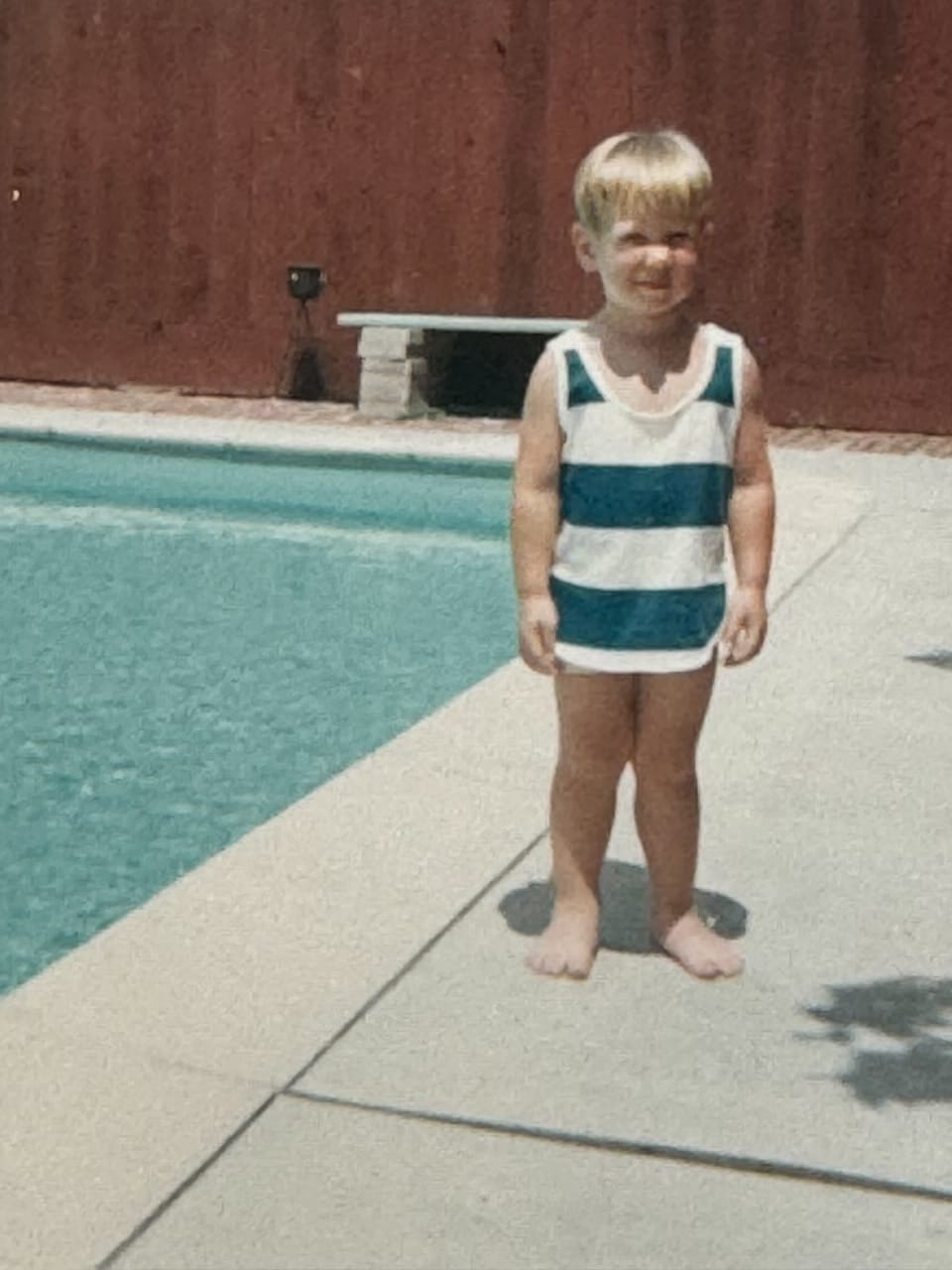
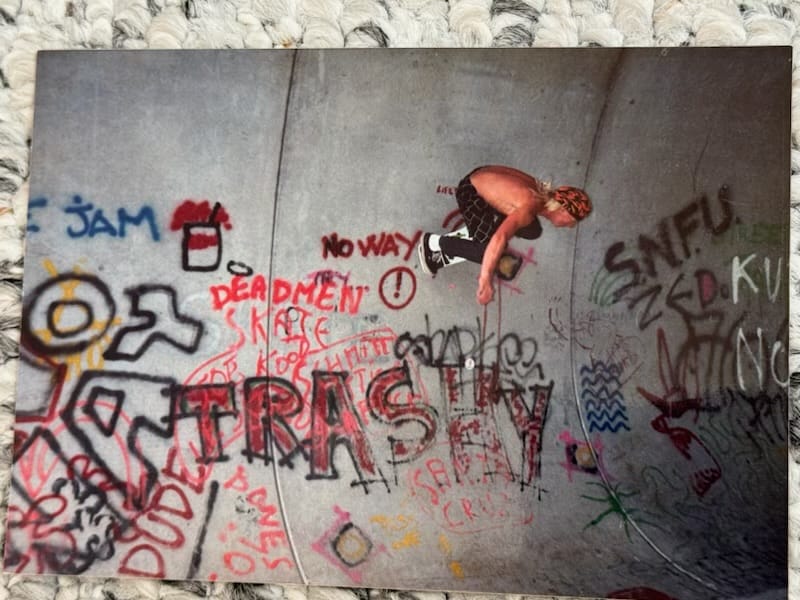
Plake's early years were rebellious and troublesome, but he found his niche in extreme sports, and being a loyal friend. [Courtesy Glen Plake]
“I keep the driver fricken sane. I keep them fed. I tell them to speed up or, ‘What are you doing? We gotta slow down!’ I’m part counselor, but then if you ever run into something mechanical, I get out because the driver never gets out, and I do any sort of repair.
“Anybody that I’ve ever co-drove for, I’m looking at it from an athlete stance, and they appreciate that. As athletes, we tend to get tunnel vision and then realize you haven’t eaten and start doing stupid things.”
They did not do stupid things. Sims finished third in the Trophy Truck Spec class, with a time of 27 hours, 13 minutes, 21.821 seconds. And of the 21 finishers in the class, Sims was the only one without a penalty for speed or virtual checkpoint violations. Exceed speed zones or drive more than 40 feet from a certain checkpoint, for example, and 10 minutes are added to your time. It wasn’t gonna happen on Plake’s down-to-the-detail watch.
But wait. Plake built his name and career as an extreme skier in classic films like Maltese Flamingo, Blizzard of Aahhh’s and Fistful of Moguls. (Don’t worry, we’re getting there.) How on earth did he get involved in one of the world’s most prestigious off-road races? Like so many pages in his life, one thing just sort of led to another.
He’d been fishing with his dad in Baja in 1994 or so when the 1000 was running. One morning, they decided to watch part of the race and came upon a disabled racecar in a remote part of the course. The guys had been up all night trying to troubleshoot a fuel pressure problem and couldn’t reach their team by two-way radio. Plus, they were hungry. Plake sent his dad to make sandwiches while he tapped into the mechanic skills he’d learned as a kid helping out on his grandfather’s ranch.
“I said, ‘I know how to spin a wrench. I’d like to see what’s going on.’ I identified the fuel system and got them in a situation … long story short, we got them up and running, and away they went.”
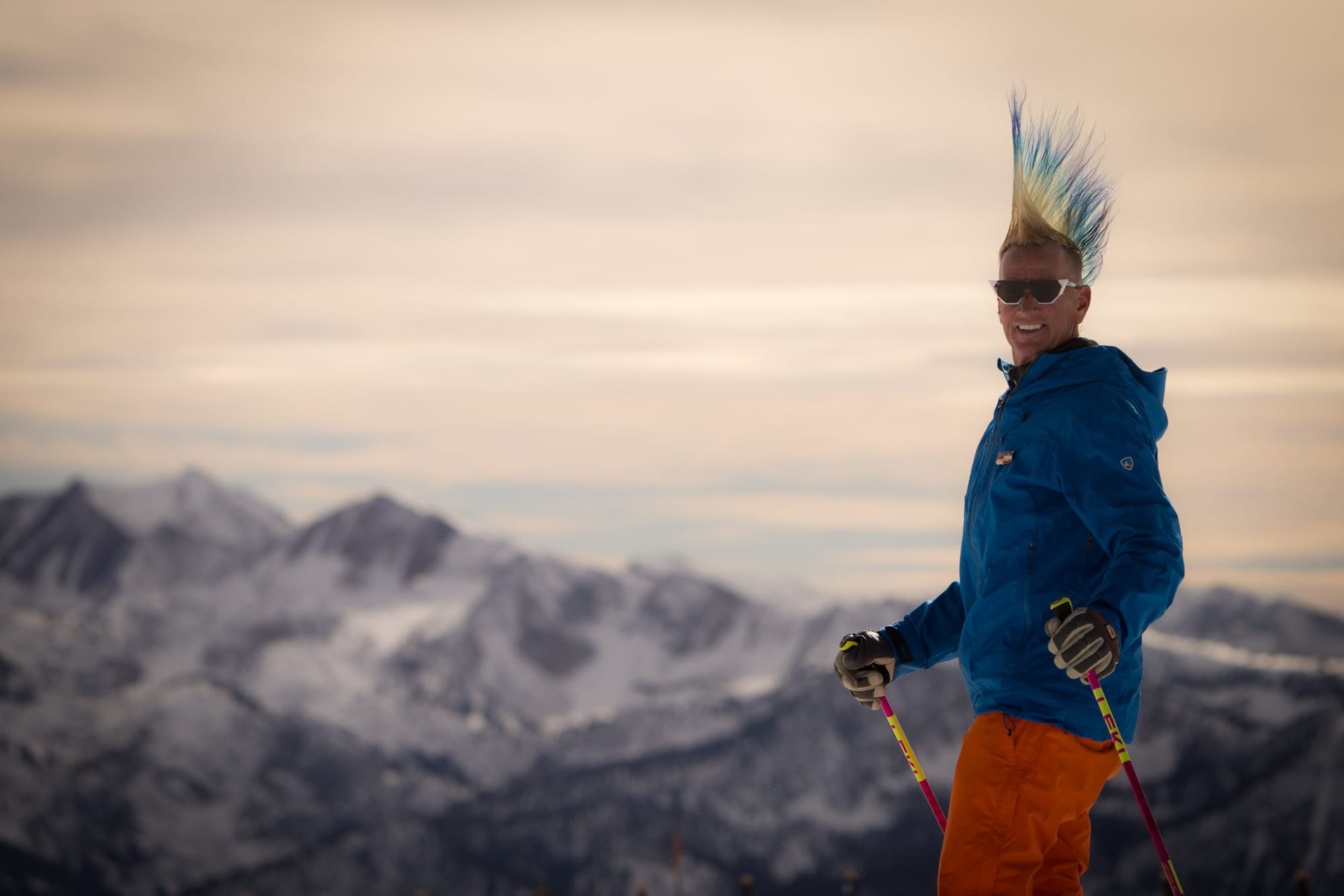
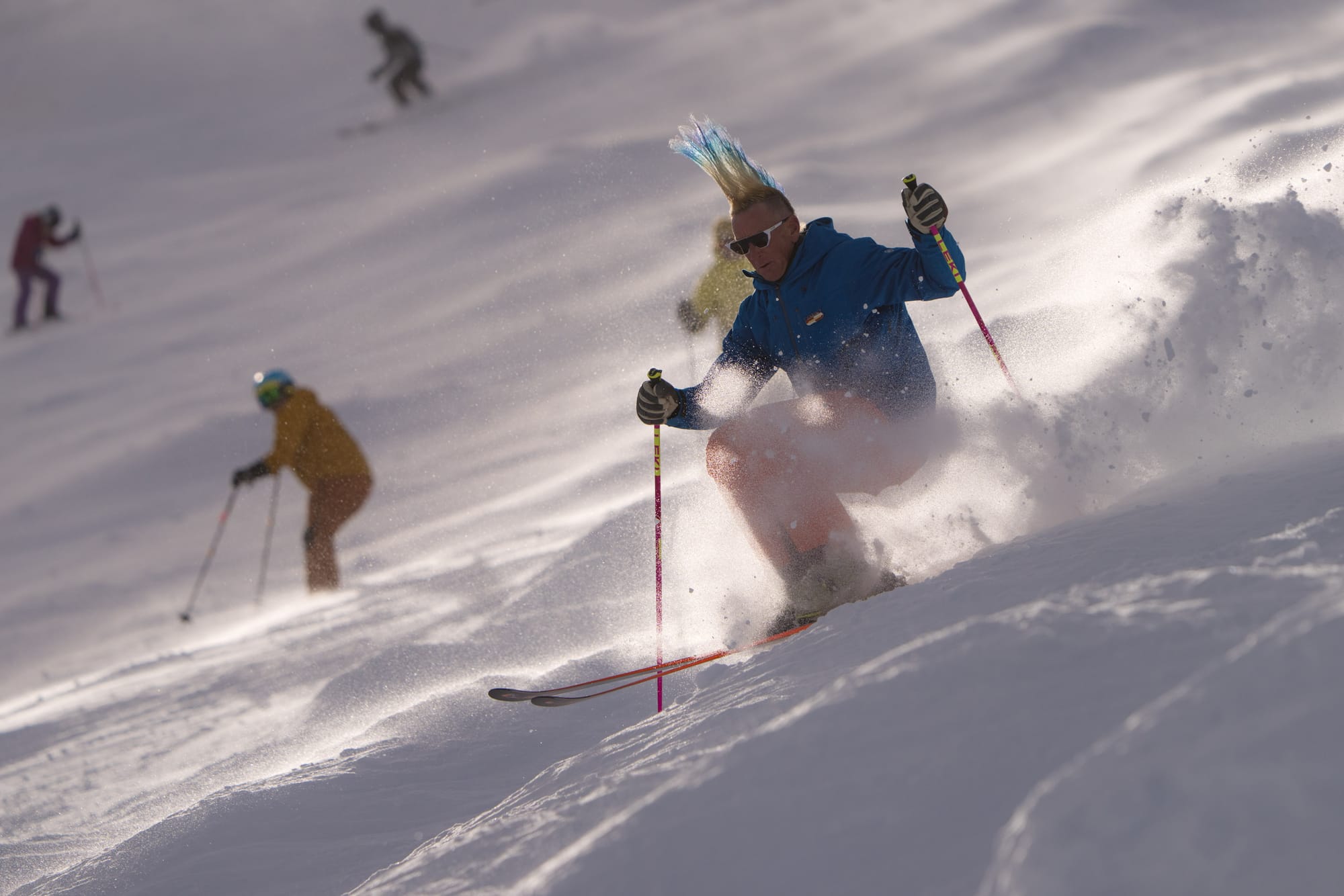
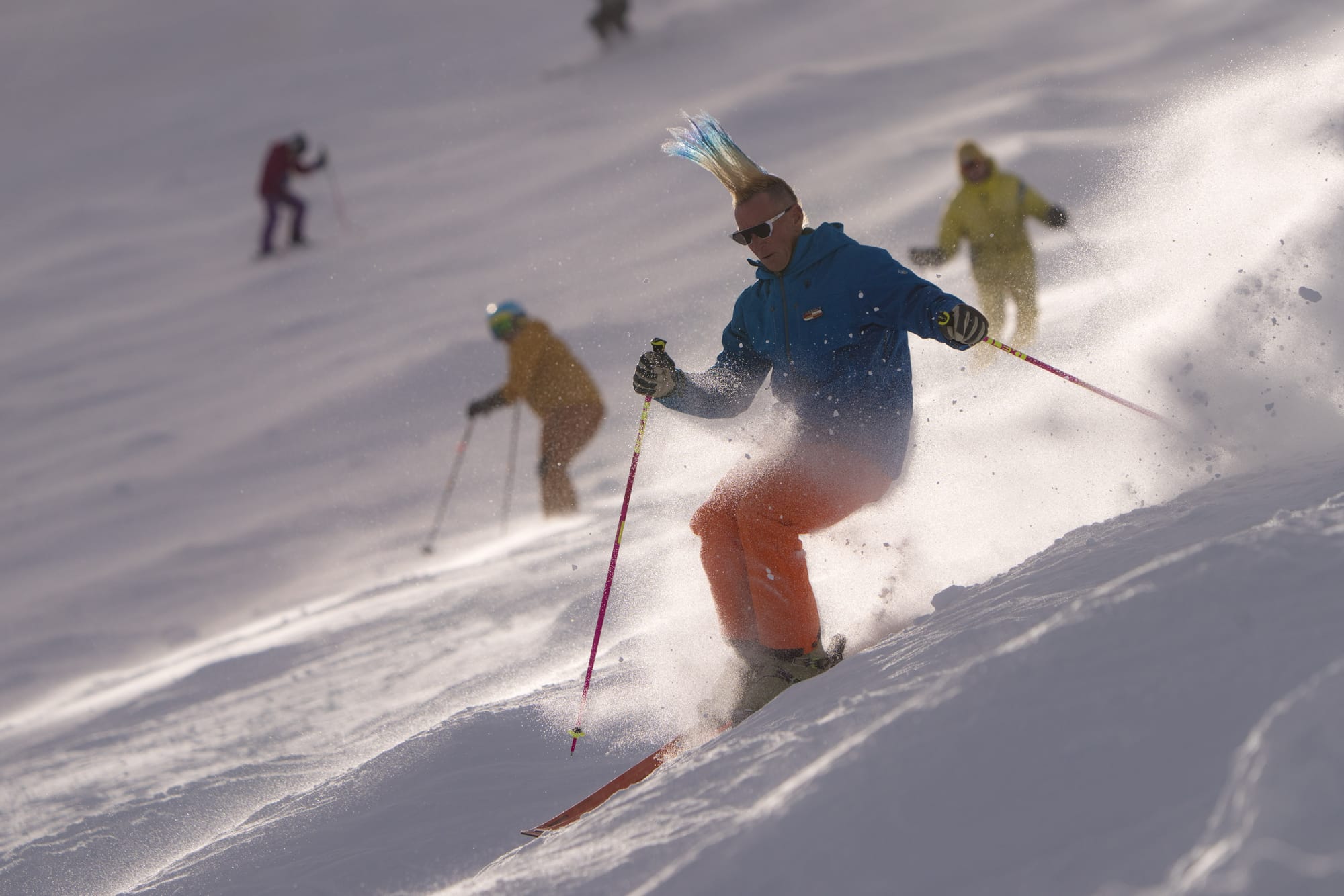
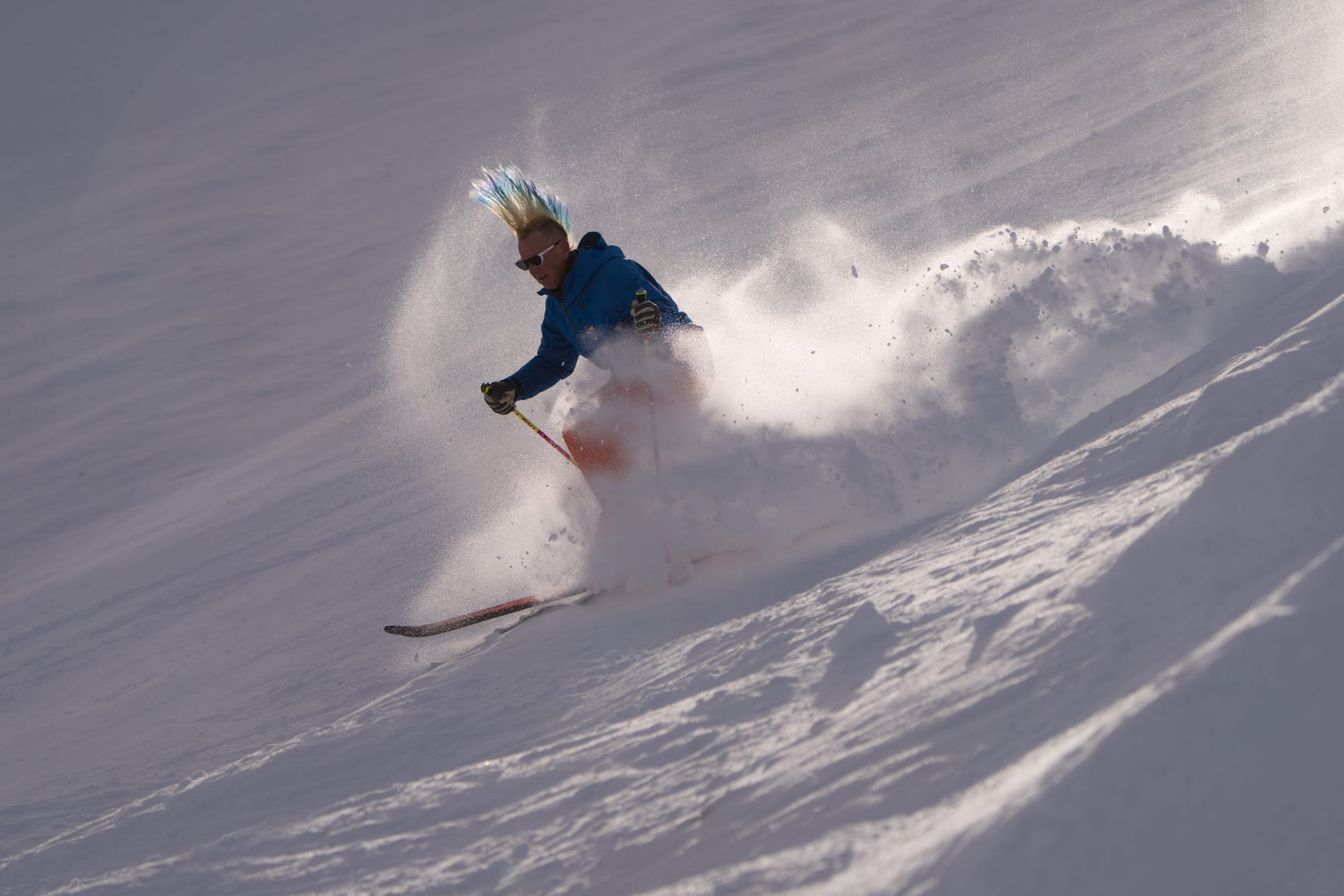
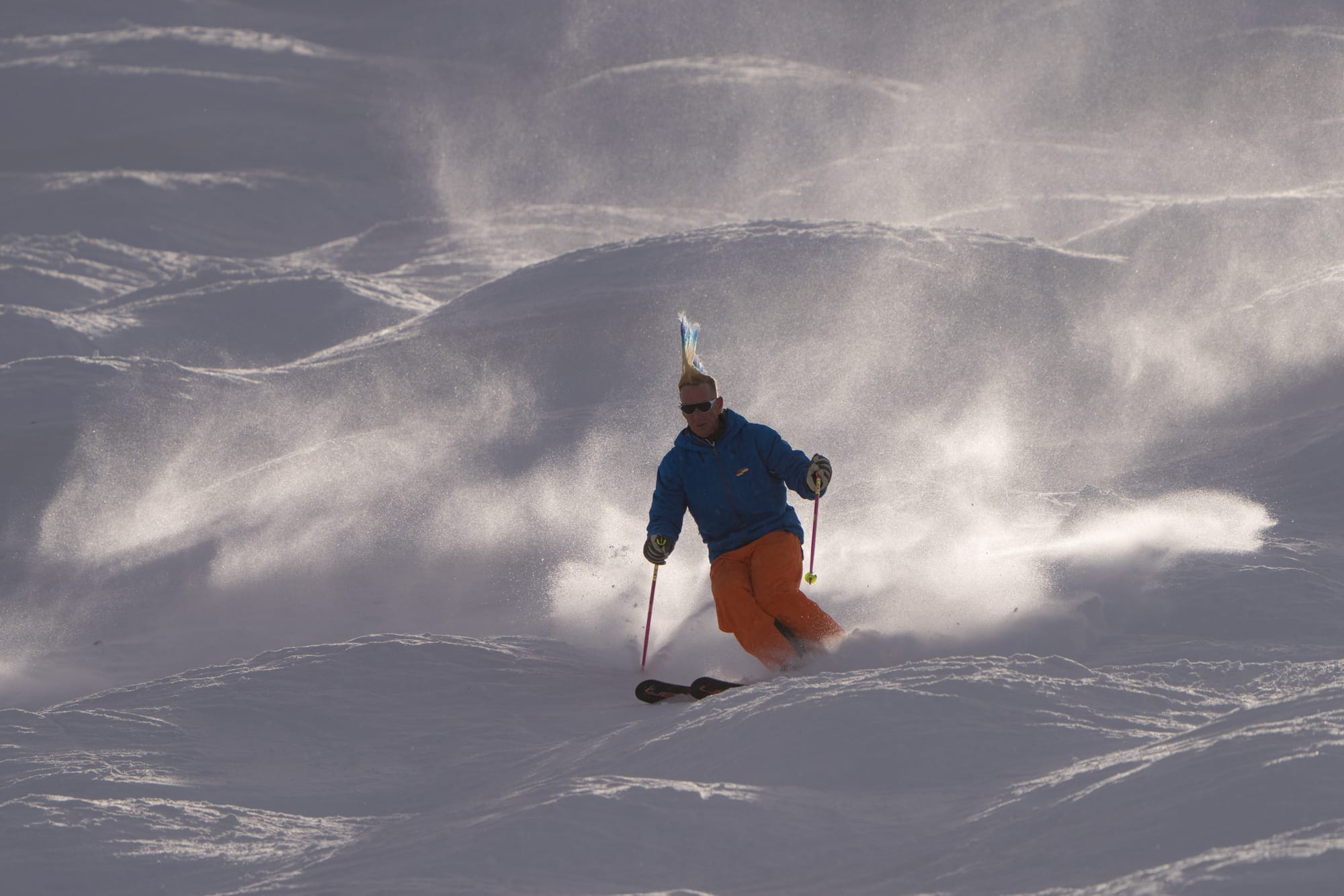
Plake crushes the moguls, rocking his signature mohawk, at Mammoth Mountain, California. [Christian Pondella photos]
He’s been part of Baja 500 and 1000 races ever since.
The spin-a-wrench anecdote tracks with the picture painted by one of Plake’s good friends, Jeff Ghiglia. Now retired, he owned an autobody shop in Reno for 30 years, and he and Plake have worked on countless projects over their 15-year friendship.
I don’t even mention the Baja fuel system story, but Ghiglia offers this: “If you’re broke down on the side of the road, he’s going to stop and see if he can help you, and not just to give you a ride. He wants to see what the problem is. He thinks he can fix it, which is often true. He’s one of the better mechanics I’ve ever been around, just exceptionally smart. A smart human being, but as a mechanic working on cars and boats, he just enjoys it.”
Plake spent a ton of time at his grandfather’s ranch in the northern San Joaquin Valley but grew up in South Lake Tahoe, California, where he started skiing at age 2.
At around 12 years old, he knew he’d be a skier, but not on the normal instructor or ski racer trajectory. He raced, yes, starting with traditional alpine disciplines, but then moved on to events and terrain with more air, bumps and edge — big edge that suited his own.
He was captivated by the freestylers of the ’70s, watching those guys fly through moguls, launch into aerial tricks and win cars.
Another influence: the anything-goes casino scene just across the border in Nevada. Everyone’s parents worked the casinos as bartenders, dealers or whatever else, and it wasn’t uncommon to see celebrities like Frank Sinatra and Sammy Davis Jr. walking down the street.
He had no trouble scoring drugs and alcohol as a teenager, even if it meant darting into the liquor store and back out with beer or a fifth of Southern Comfort.
And the music. Ahhhh the music. Skating at the South Shore halfpipe — the local social media of the early ’80s — that’s how he and his friends knew to show up at the VFW hall for Social Distortion or someone’s house for Bad Religion. That music kept them going.
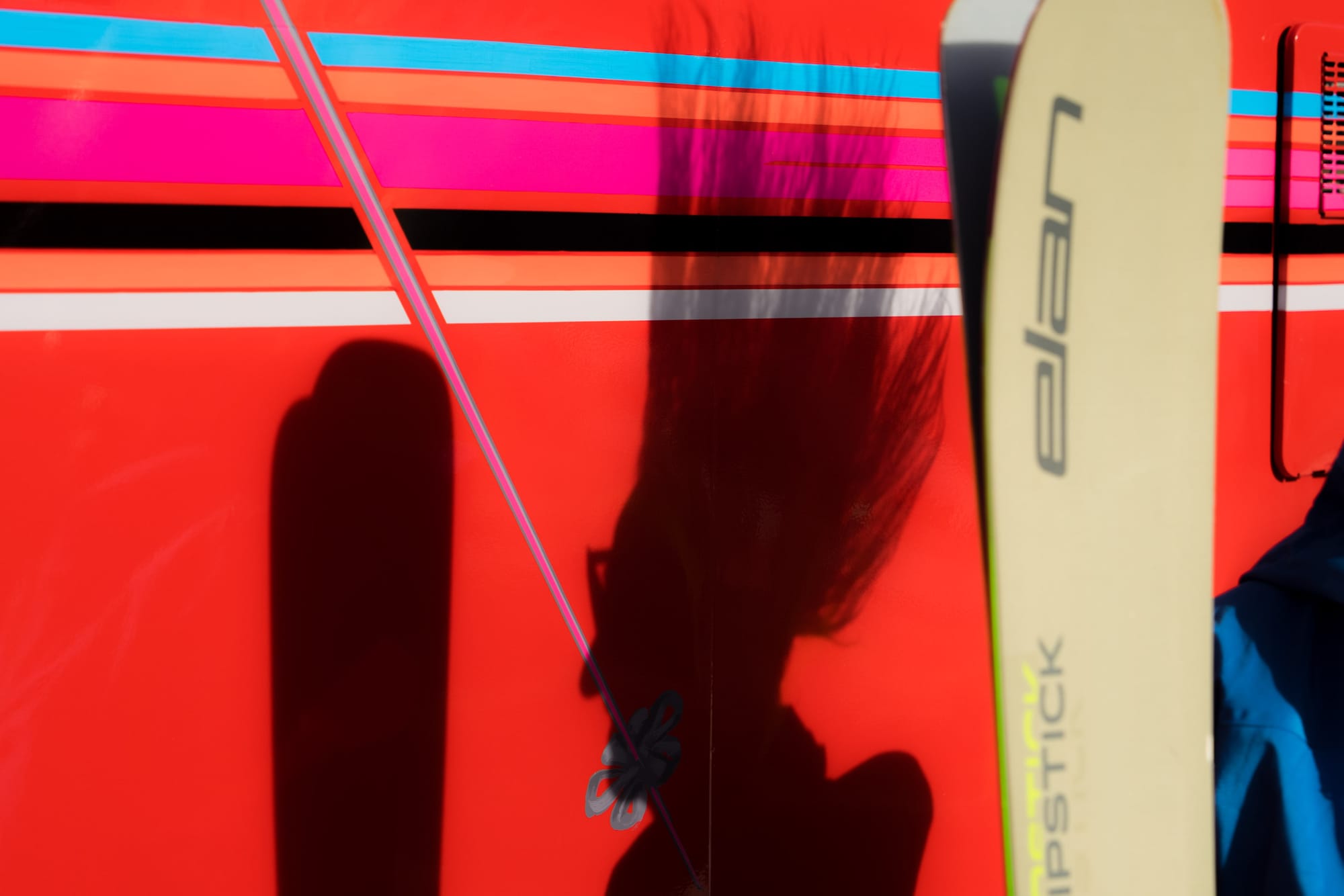
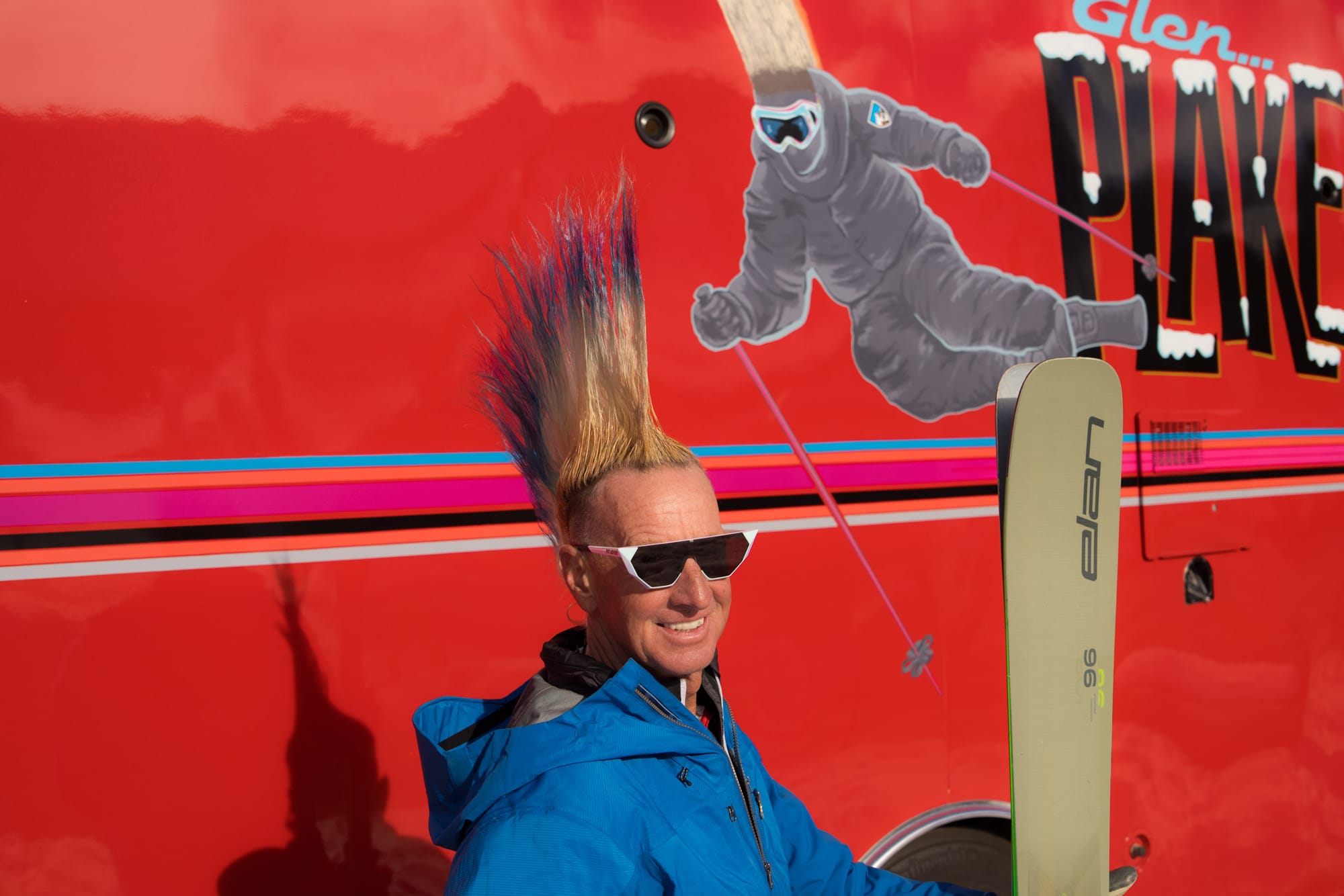
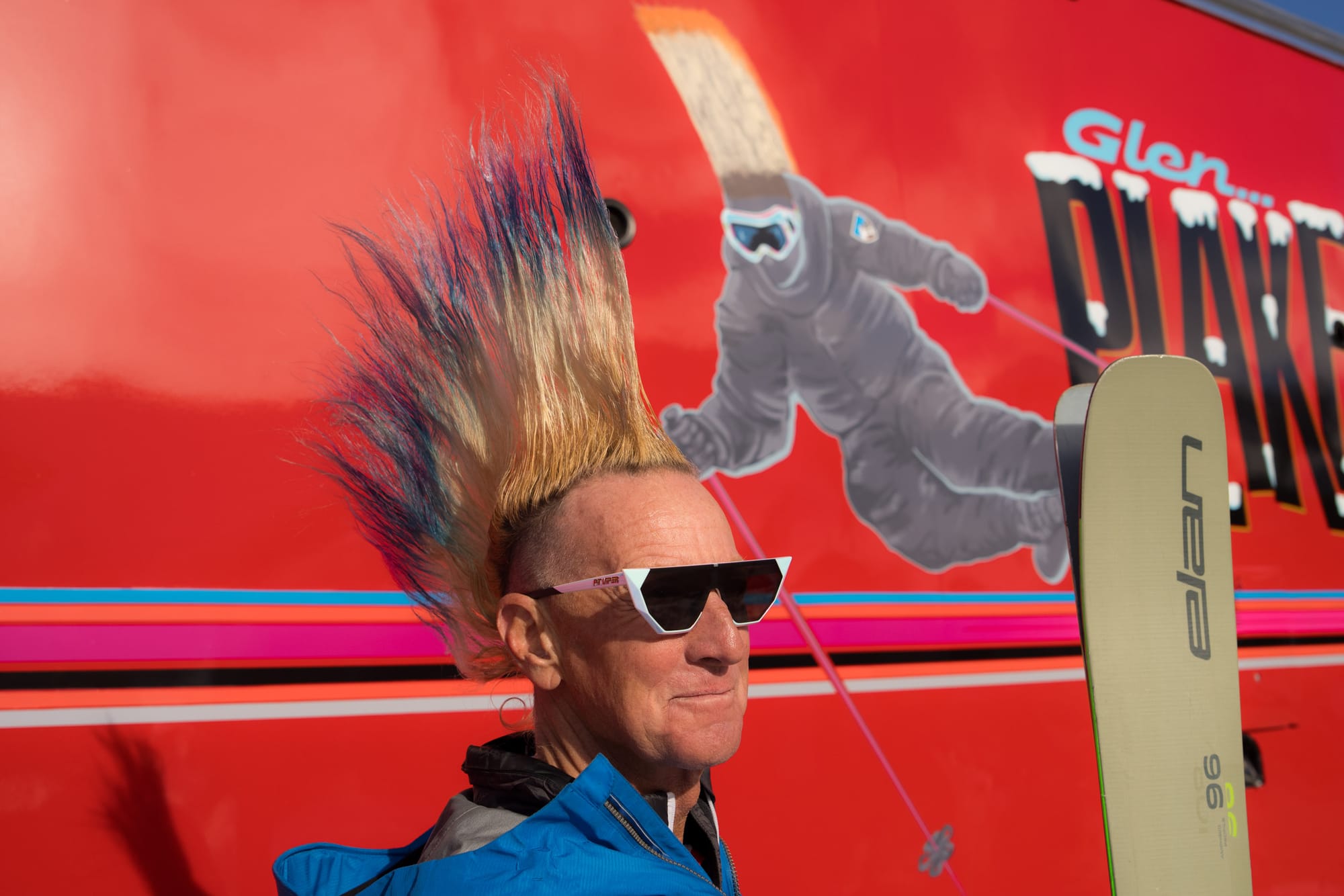
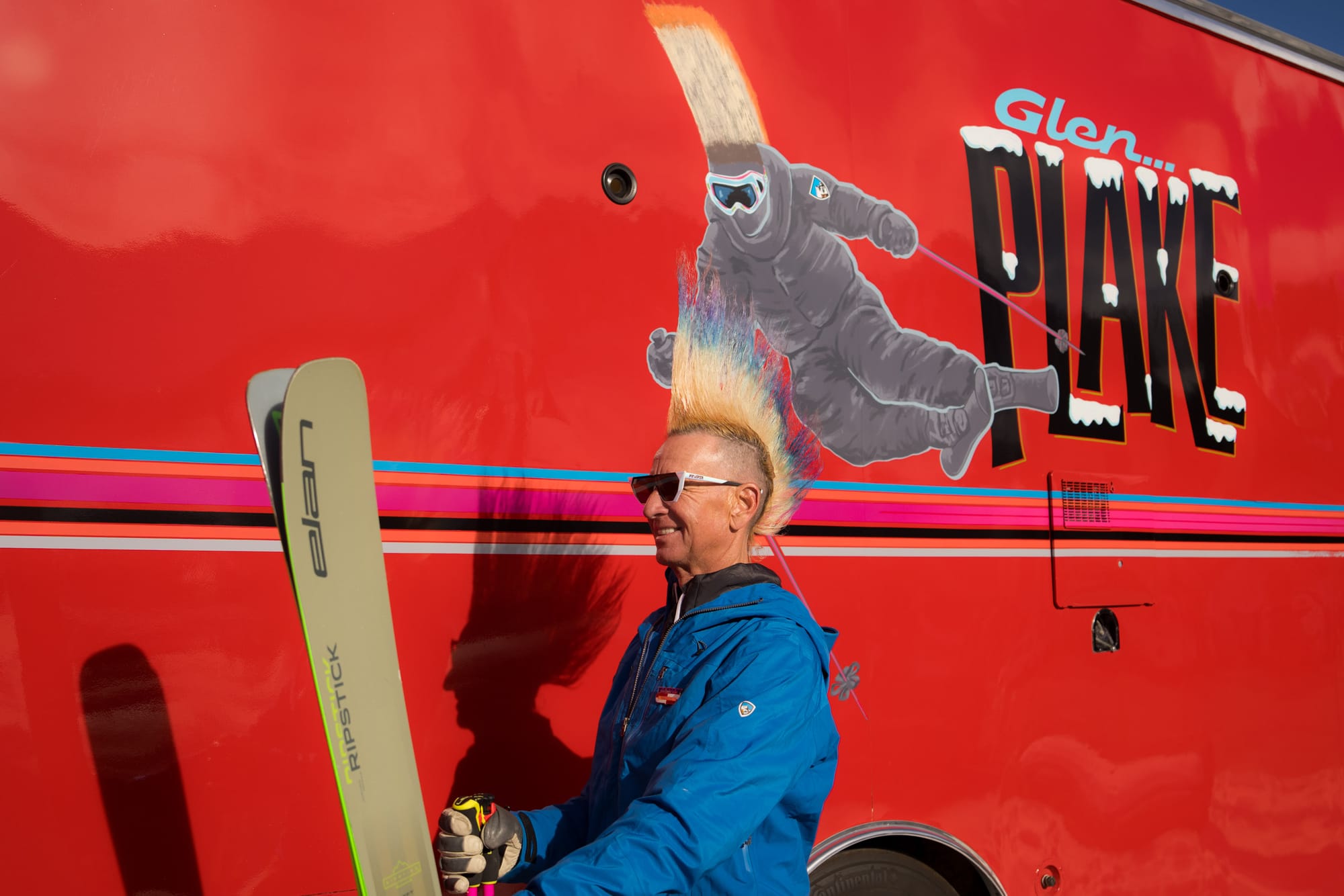
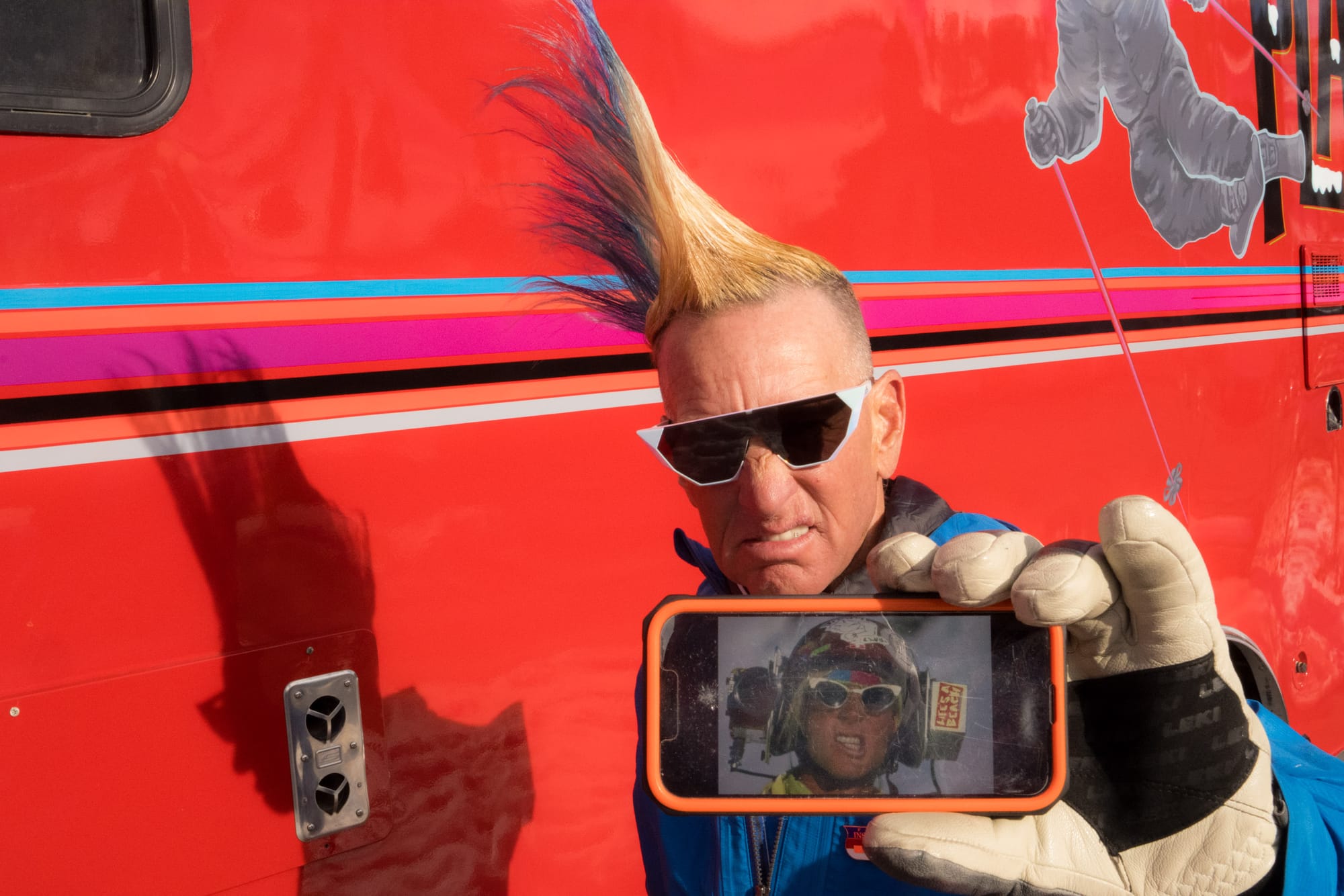
Life on the road suits Plake, shown here next to Big Red, his home on wheels. Plake, bottom right, with an image from Blizzard of Aahhh's. [Christian Pondella photos]
“We didn’t want to listen to the same old garbage,” he says, laughing again. “We wanted something of our own. It also influenced the way I grew up from the standpoint of thinking for myself and being in charge of my own wreckage and making my own decisions and accepting decisions and not eating the cake that they want me to. Punk taught us that.”
In the skiing world, that cake was pretty mainstream. Izod shirts, GQ haircut, All-American propriety. Plake played the part for a while and even had an opportunity to be a moguls skier with the U.S. Ski Team. But he got sick of the schtick.
“I got so sick of this Ken doll mentality that societal norms tell us we’re supposed to be. Give me a break. I don’t live the way you want me to live and don’t look the way you want me to look. I gave up and said screw you and started wearing my black leather jackets to the ski events and started letting my mohawk fly. I embraced the life I was living instead of toning it down to their standards.”
With uncanny timing, a new era of ski films embraced the life he was living, too. In 1986, he appeared in Greg Stump’s classic Maltese Flamingo, where he’s one of a dozen skiers breezing through the cliffs, trees and steeps of Europe and North America.
In one scene mid-film, Plake is the last of three skiers slicing through powdery, granite-y slopes on the kind of bluebird day that makes you fantasize about taking those very same out-of-your-league runs ASAP.
The first skier flies down a chute, followed a few seconds later by the second. You expect Plake to trail next, but the seconds pass. Suspense builds. The narrator says the camera operators almost gave up but knew better: “You never shut down the cameras because you never know where this guy is gonna fly in from.”
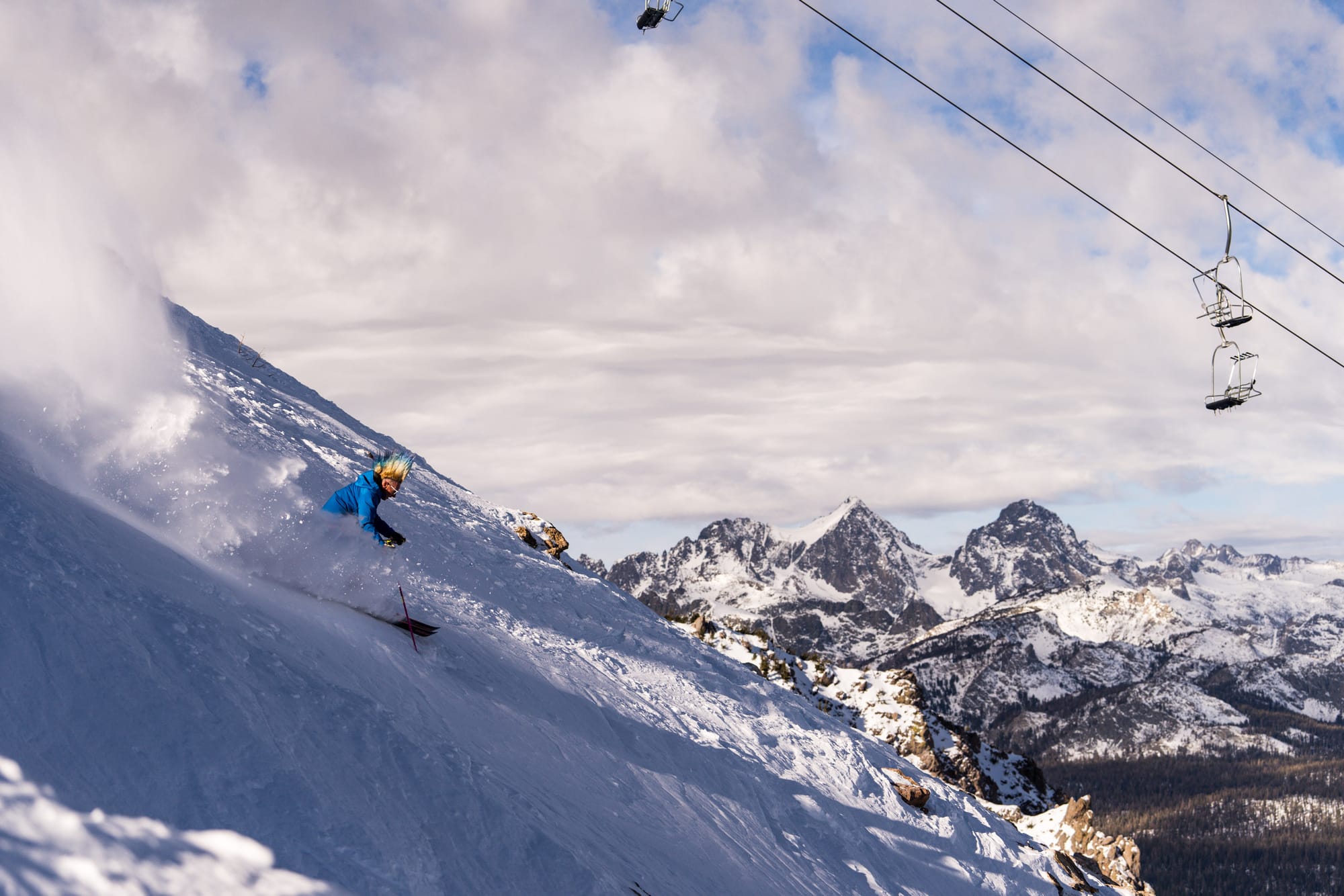
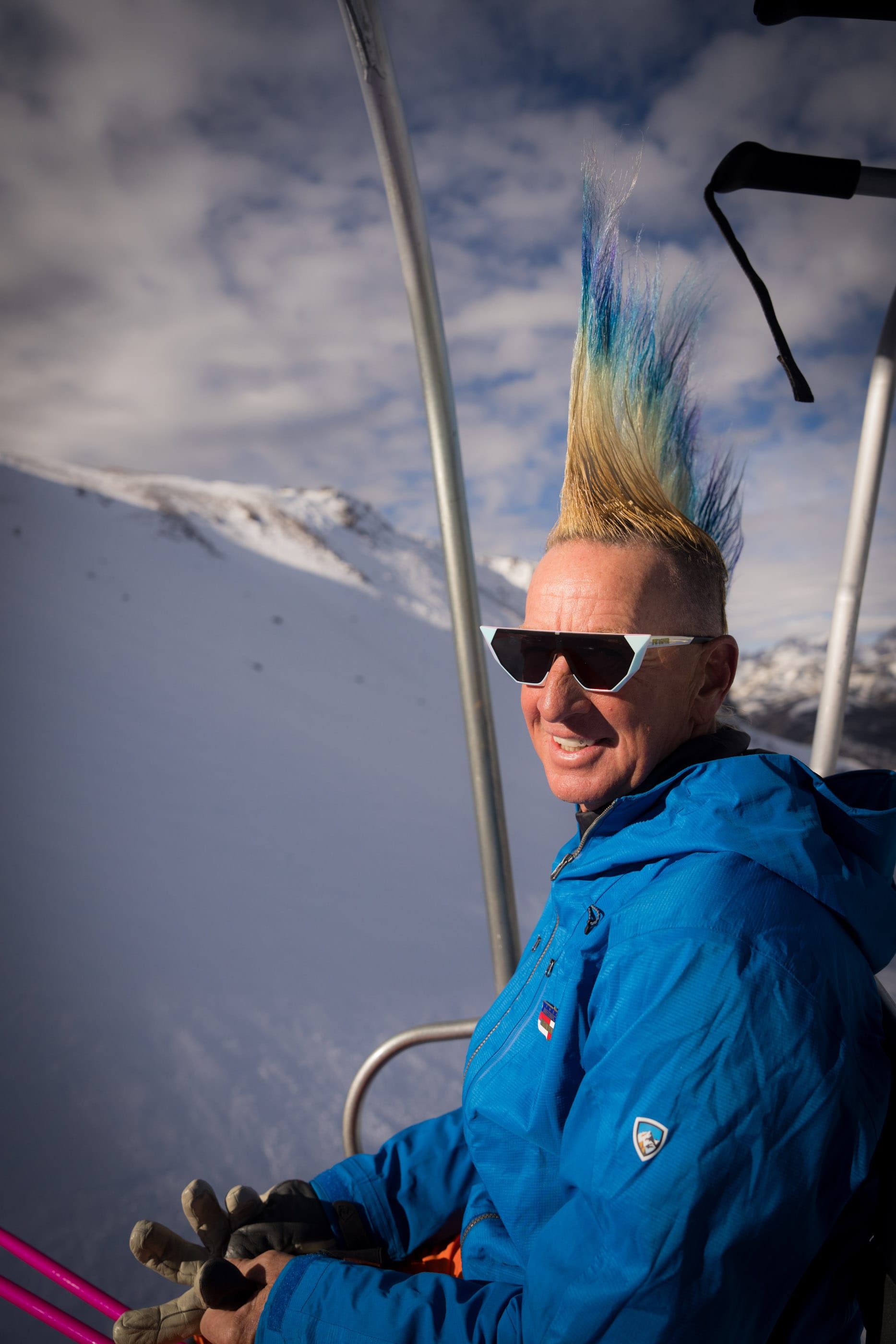
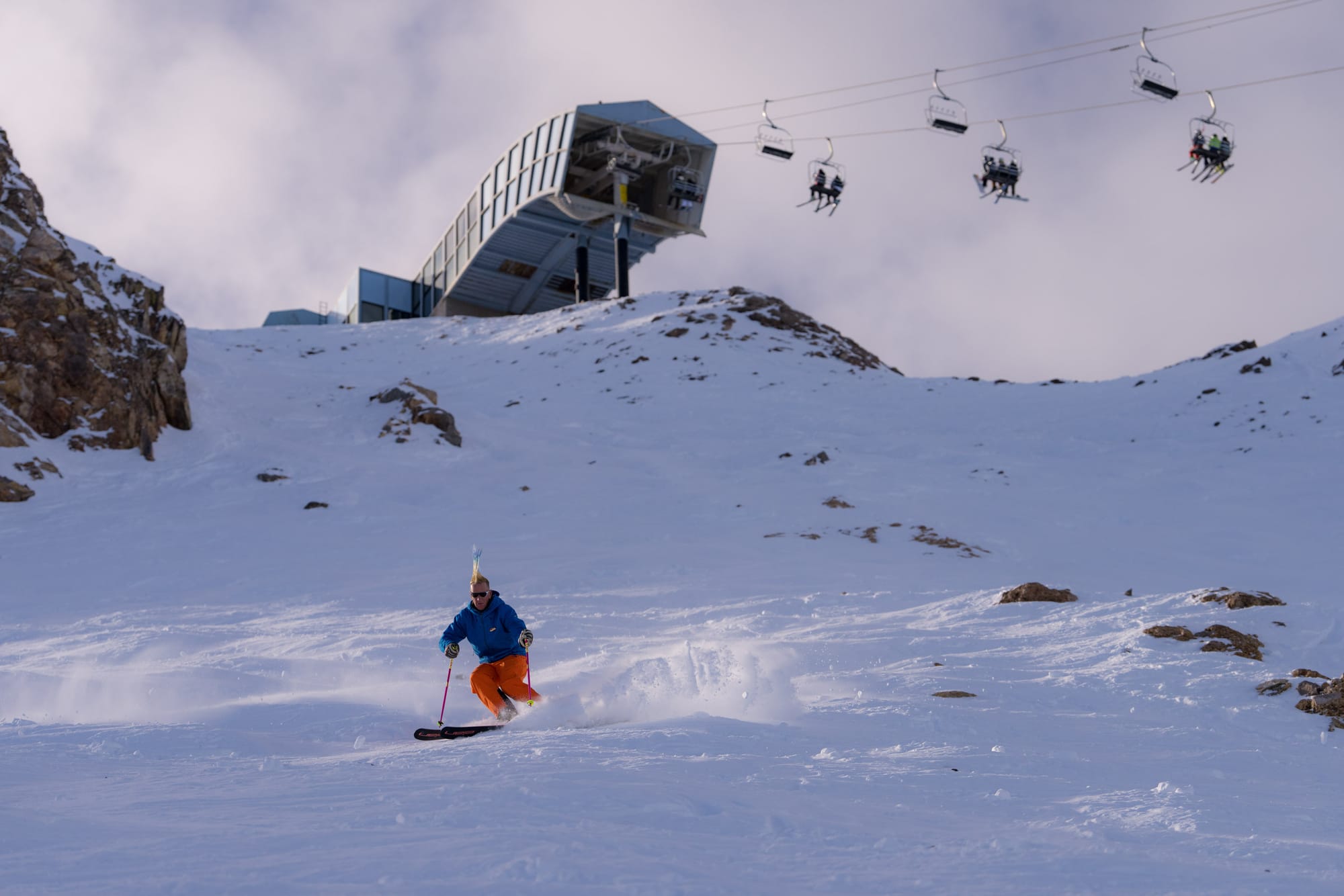
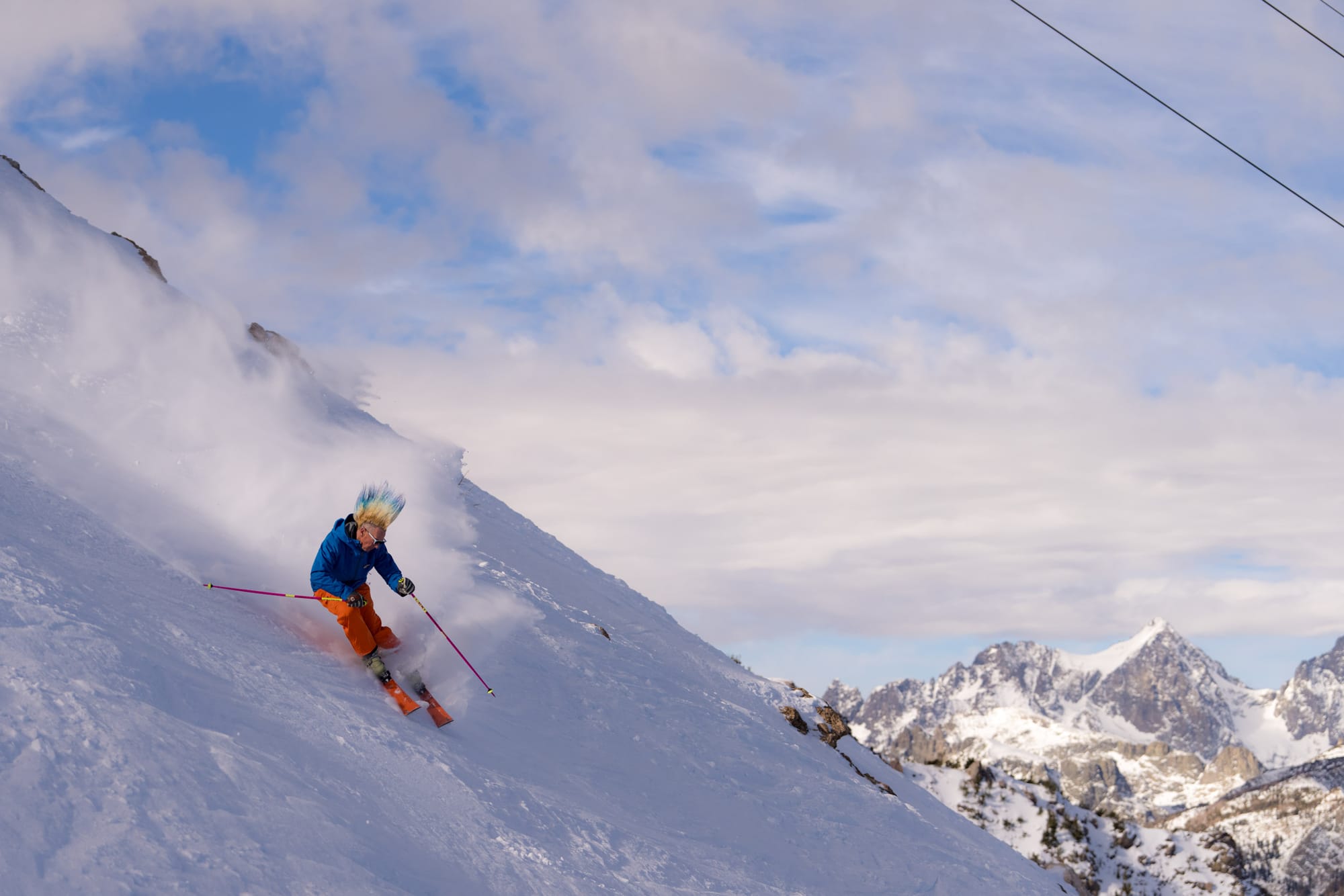
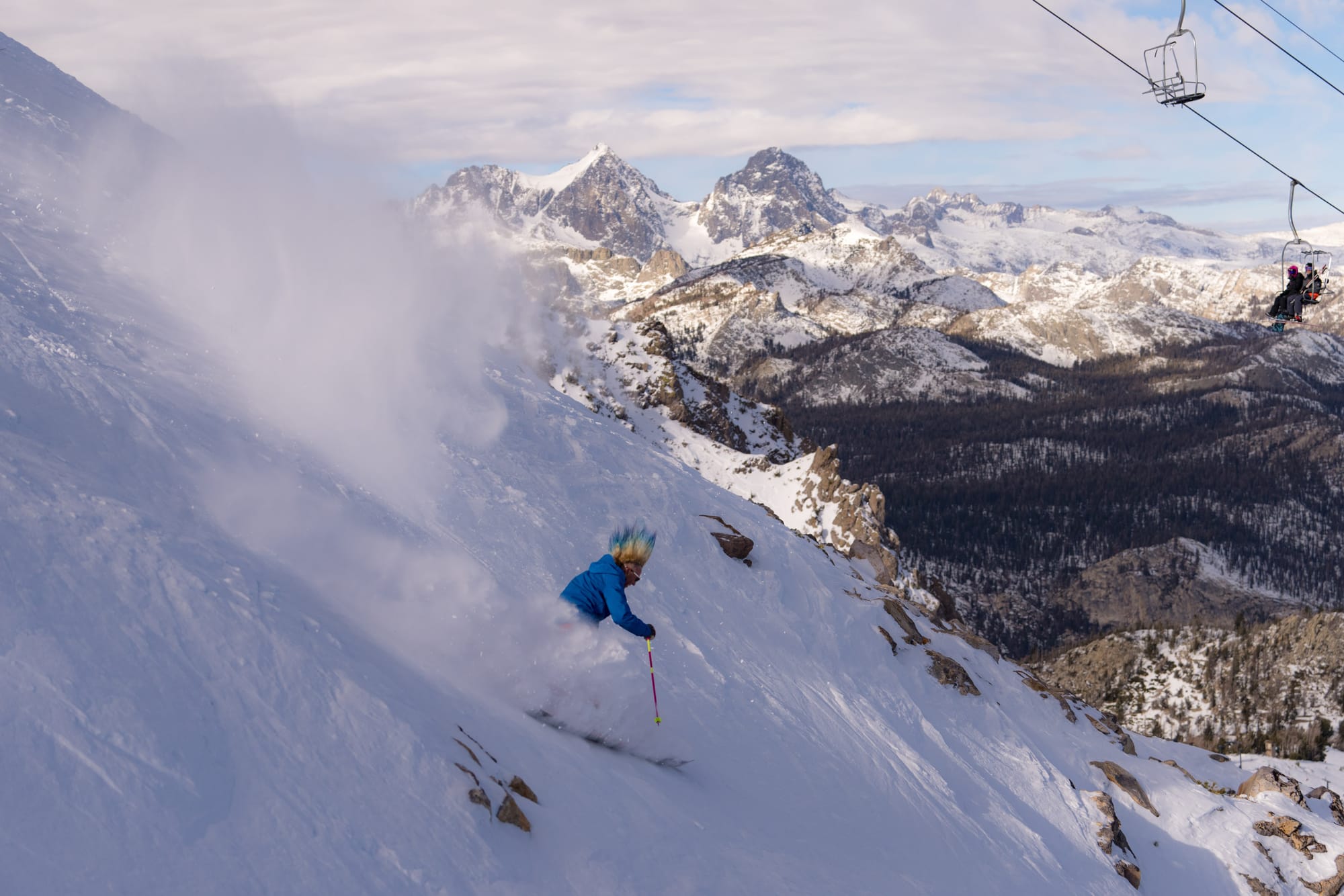
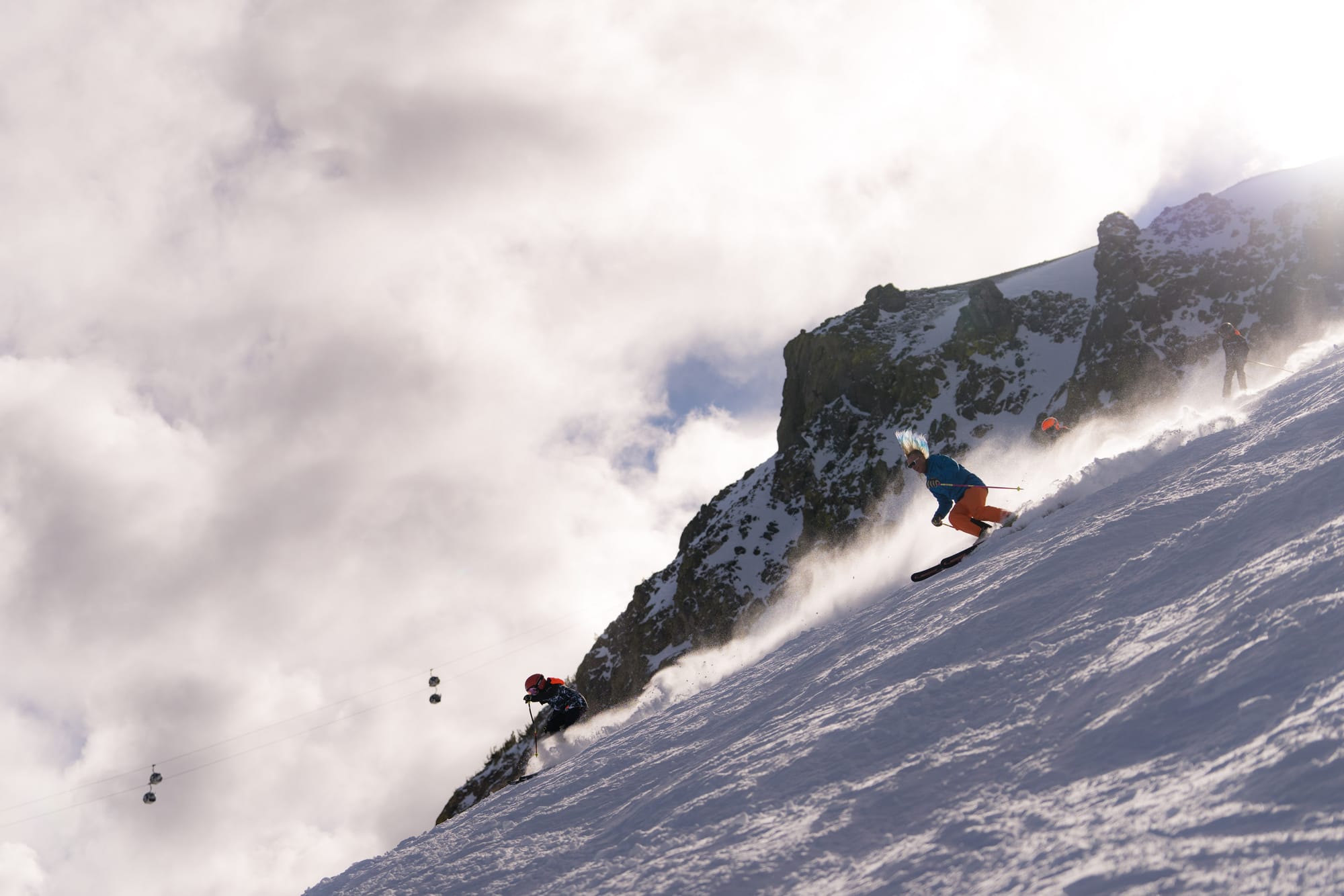
Among the earliest ski-movie stars, Plake would do things that left fellow skiers in awe. [Christian Pondella photos]
Instead of entering the chute, a pink and blue-decked Plake takes the more direct route: launching off the rocks well above for maybe a 25- or 30-foot jump. Hard to say because the landing is out of the frame.
Two years later, Stump cast him in Blizzard of Aahhh’s right about the time he was due in court on drug charges. Instead of going to court, Plake famously sold his car on the way to the airport to pay for his ticket to Chamonix, where he filmed the movie and sealed his notoriety with his full-speed fearlessness and bad boy persona.
Cast members answer the question, “If you could be any animal in the world, what would you be?
- Snowboarder Mike Jacoby: “One of them chipmunks that can jump off the cliffs and still land alive.”
- Chamonix chef Tim Holman: “A kangaroo.”
- Plake: “Boy, I don’t know. … Me!”
His giant laugh fills the screen the same way his emojis do today.
He planned to just stay in Chamonix, a fugitive and all, but Blizzard went big, and a Today Show appearance brought him back to the States, whereupon he resolved the drug charges and moved on.
But it was in Chamonix, home to Mont Blanc, the highest mountain in the Alps at 15,766 feet, where he learned that true extreme skiing is more than steep terrain and dicey cliffs.
“I realized the actual dictionary meaning of extreme skiing is where you’re dealing with a complex mountain itinerary that involves a high level of alpine skill to access the slope, understand it, and then go ahead and, in fact, ski that slope using what I know I could do with my skis.”
True extreme skiing was the natural next step. After bolstering his alpine skills, everything from climbing to mountaineering, he went on to pursue dozens of the most significant, most challenging peaks in the world.
One was Manaslu in the Nepalese Himalayas, the eighth-highest peak at over 26,700 feet. In September 2012, Plake and his close friends Rémy Lécluse and Greg Costa were on a Moguls to Manaslu expedition to be the first to climb the mountain and ski down without additional oxygen.
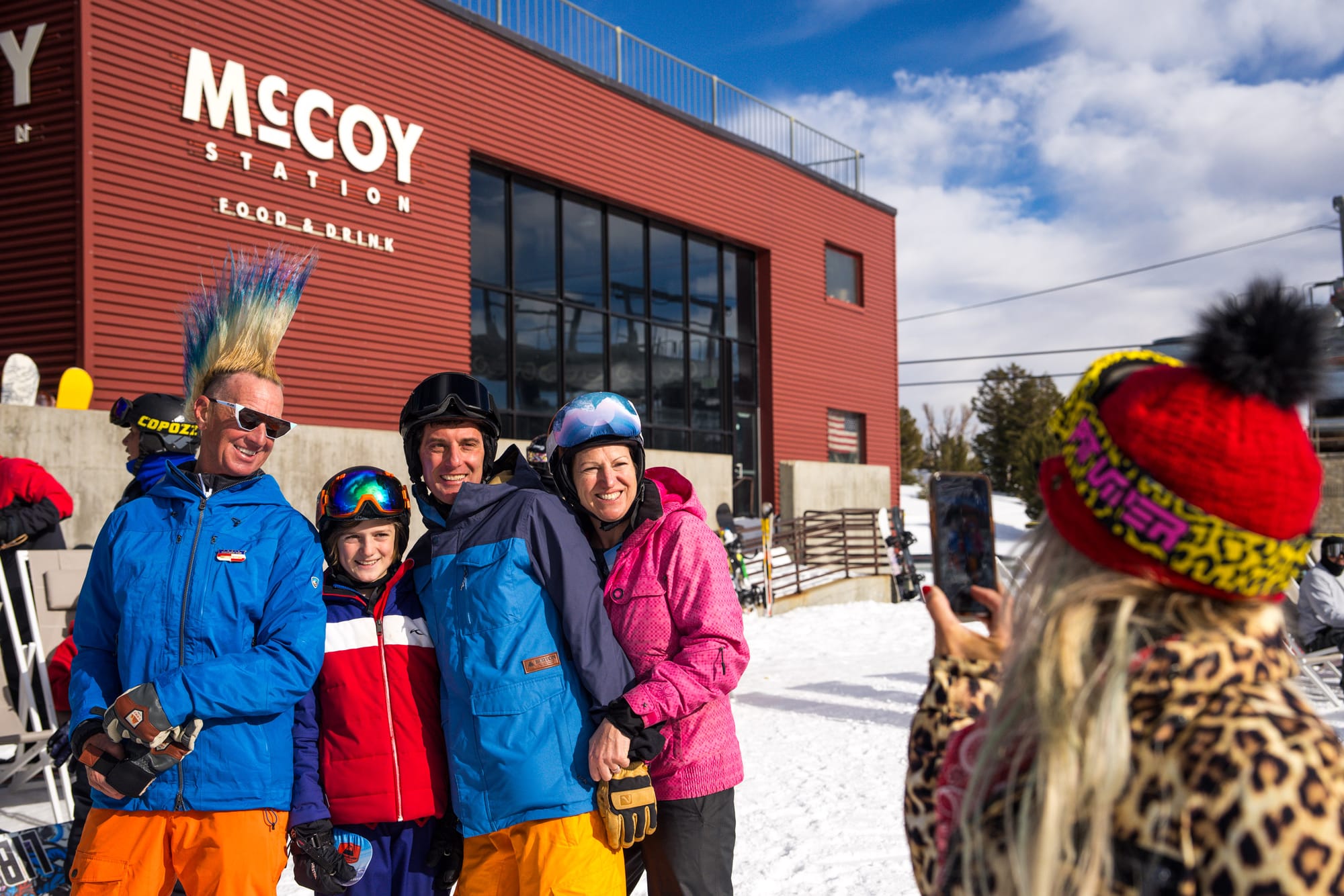
But before sunrise on the 23rd, a massive avalanche roared through Camp 3, where Plake and Costa shared a tent near Lécluse’s and a couple dozen others.
After sliding 1,000 feet over a serac and down the mountain, Plake was somehow still in his sleeping bag and tent when he came to a stop. Costa was nowhere to be seen, nor was Lécluse. Plake punched his way out of the tent and joined other survivors in a frantic search for the missing.
It all was still fresh and raw when he told CNN’s Anderson Cooper a few days later, “I thought, this is it.”
Costa and Lécluse were among 11 who died in the slide. Plake honors them through a small nonprofit organization called RG2, where he teaches skiing skills to apprentice mountain guides in developing countries around the world.
“Remy was an international mountain guide, and Greg was an international ski instructor, so I thought it would be nice. I show them what skis to use, not to make them skiers but just introduce skiing skills. Skis can do wonderful things.”
His joy in skiing remains as constant as it’s always been. After the holidays, he and Kimberly took Big Red to Mammoth Mountain and helped kick off the ski season, even though the snow was sparse at the time.
Now, they’re in Chamonix, where they have an apartment and will spend the season: “It’s where I base my skiing and mountain activities out of, and I tend to seek as much pleasure as I possibly can.”
That pleasure no longer includes drugs or alcohol — he quit drugs in 1990ish and alcohol in 1992 after “waking up in another damn jail cell” after a barroom fight in Jackson Hole.
But it does include skiing with friends who like to do the weird ones with him, the grand courses that are too technical for all but a handful of people.
Brice Bouillane is one of those people. A guide who takes guests on big mountain outings, Bouillane started skiing with Plake for fun eight years ago and sometimes brings him along when skiing with clients.
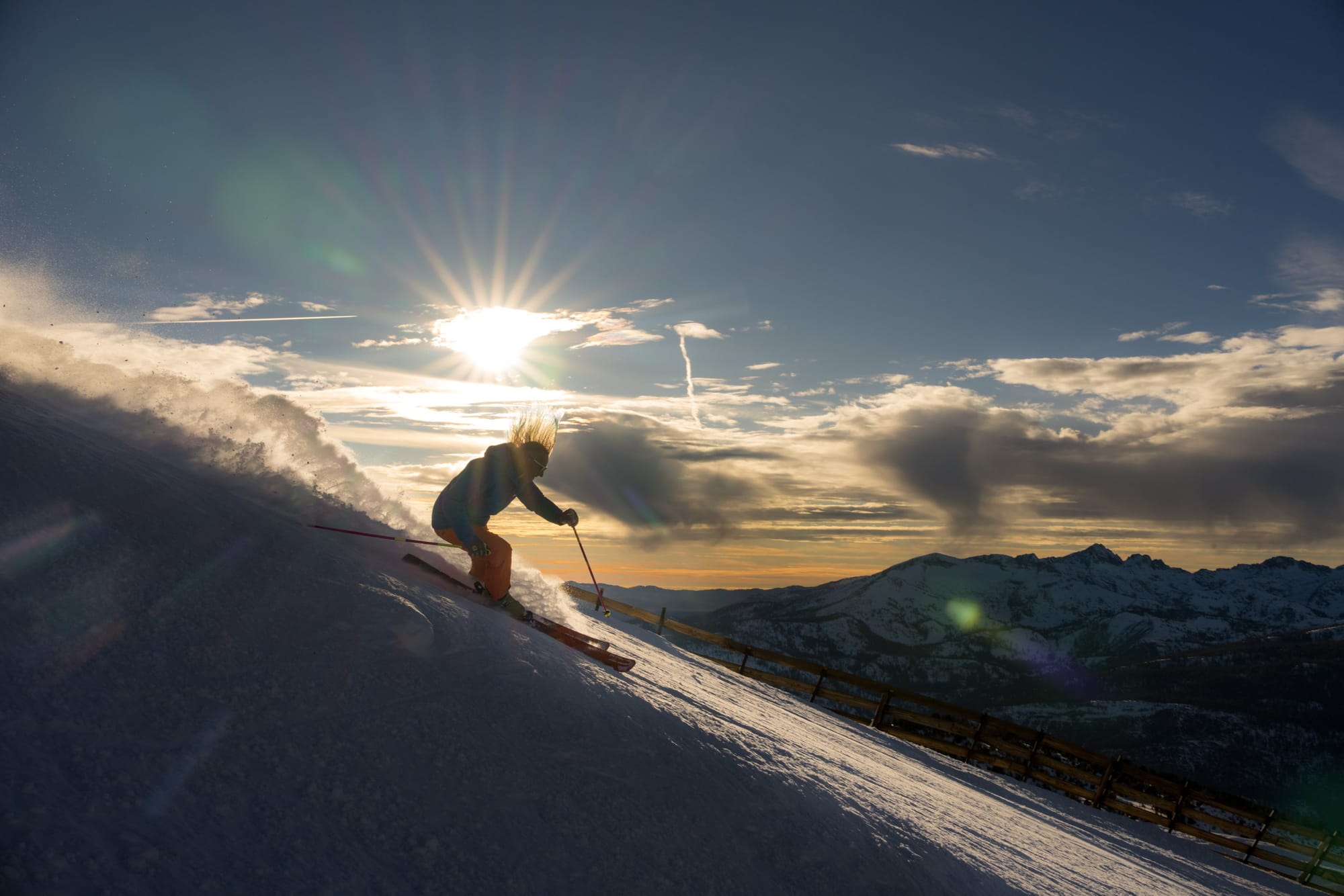
“He is a very good friend to share the mountain experience,” Bouillane says from Chamonix. “I love being with him because he’s always joyful and happy and smiling and laughing. We spend many days steep skiing. Some people call it extreme skiing, but we try to find very interesting runs.
“And with my guests, he provides good advice, and if we need ropes on a steep place, he’s ready. He’s very calm and relaxing. He’s nice. And gentle, and,” Bouillane pauses, “a normal person even though he’s a star.”
Plake and Kimberly bring all that joy and fun to U.S. hills, too, when they take Big Red on “Down Home Tours” to drop in unannounced at small and medium resorts to spread the love. The tours carry on the celebration of skiing and marriage that the Plakes started on their honeymoon in 1991 when they took their camper van on a 68-day, 13,000-mile journey to ski 50 resorts in 33 states.
The tours, the films, the championships (did we mention Plake won the World Hot Dog skiing championships three times?), these are among the many reasons he was inducted into the U.S. Ski and Snowboard Hall of Fame in 2010, credited with doing “more than anyone to promote the love for skiing to millions of people.”
But for those who know him, love is just his natural state, not just in skiing but in everything. Well, love and a complete commitment to whatever feat he’s pursuing, whether it’s skiing, waterskiing, cycling, windsurfing ...
“I’ve seen this man do things most people should be incapable of,” says Brandyn Herman, a Reno oral surgeon who was just 10 years old when he first met Plake as the crazy guy at the lake 26 years ago. “He lives to train. He’s almost 60 years old and can beat the majority of any age group at anything. His attention to detail, whether he’s putting it into a new sport or working on motors, is something I’ve really taken into my life.”

It's just how Plake is wired. All over heck but also intensely possessed by doing whatever it takes to ski the course or reach the speed or fix the fuel system.
“Great things don’t happen overnight. Skills don’t come overnight. I love things that are difficult to do. I love things that are easy to quit. I love doing these things because if you don’t quit, you get something that’s really hard to do accomplished.”
Baja 1000 — hard to do.
The Silver State 508 ultra cycling race — hard to do.
Barefoot waterskiing, moguls, cliffs, 20,000-foot-plus peaks — wicked hard to do.
Living on your terms — hard to do.
He’s done them all. And the more you talk to him, the more there is, and he’s good with that. He points out the simplicity GIF he saw once: A guitar with a single string and the caption “live simple.”
“Nah,” he says. “I want Eddie Van Halen’s guitar with all the strings and color and sound.”
Advertising and sponsorship opportunities are available. Contact Jim Hoos at jhoos@r1s1sports.com or 602-525-1363.